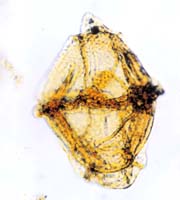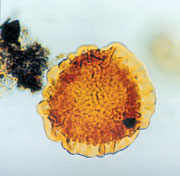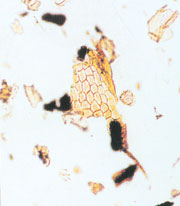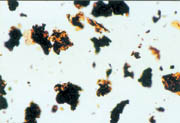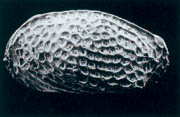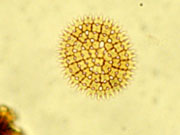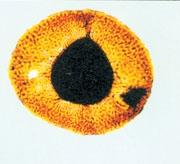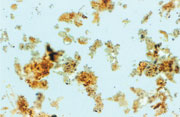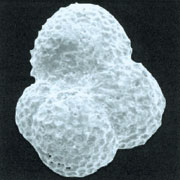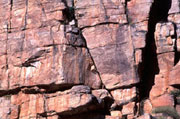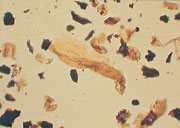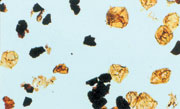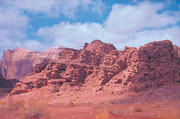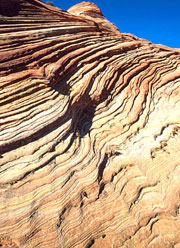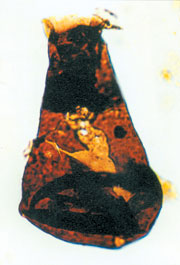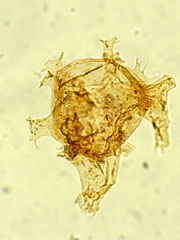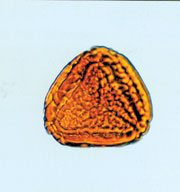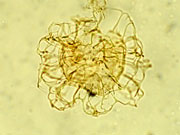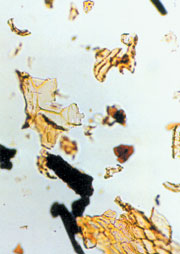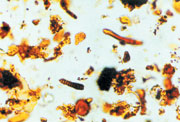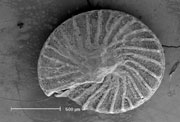 Biostratigraphy Biostratigraphy
Wellstrat's personnel and associates provide biostratigraphical analyses; predominantly palynology, micropalaeontology and nannoplankton analysis. The application of biostratigraphy to hydrocarbon exploration, development and production is well understood, and Wellstrat's personnel offer a full range of high-resolution conventional and reservoir biostratigraphical analyses. Disciplines covered include:
- Palynology – dinoflagellate cysts, spores, pollen, acritarchs, chitinozoans
- Palynofacies – woody tissue, kerogen typing
- Micropalaeontology – foraminifera, radiolaria, ostracods
- Calcareous nannoplankton – coccoliths, nannoliths, silicoflagellates
- Conodonts
- Palaeoenvironmental and biofacies interpretation
- High resolution sequence stratigraphy
These disciplines are used in the study of:
- Age determinations
- Biozoning of sedimentary sequences
- Palaeoenvironmental reconstruction’s
- Single well analysis
- Multi-well correlation studies
- Sequence stratigraphical analyses
- Biostratigraphical review studies
Palynology
This is the study of acid resistant, organic-walled microfossils called palynomorphs. These are extremely useful environmental indicators as they can be derived from both marine and non-marine environments. Marine forms include acritarchs, chitinozoans, dinoflagellate cysts and prasinophycean algae. Pollen, spores and freshwater algae are the main non-marine groups.
The pollen and spores collectively known as sporomorphs together with dinoflagellate cysts are the main age indicators within the Mesozoic and Tertiary sequences. Acritarchs, chitinozoans and sporomorphs are the main groups used to date and characterise the Palaeozoic sections.
Quantitative analysis of samples is a primary feature of Wellstrat’s biostratigraphical approach. Using this approach reliable variations in the relative proportions of the different groups of marine and non-marine palynomorphs enables identification of subtle changes in palaeoenvironmental determinations. These changes together with similar variations identifiable through the other fossil disciplines can be incorporated into basic correlations and sequence stratigraphical models.
Palynofacies
Analysis of the overall kerogen, including the palynomorphs referred to as palynofacies, provides an even greater resolution of the palaeoenvironmental interpretation.
Wellstrat's personnel have placed particular emphasis on developing our expertise in high-resolution palynofacies analysis in order to provide a powerful tool for horizontal biosteering in wellsite settings. Palynofacies is the study of the composition of acid resistant organic matter in sedimentary rocks, which can be used to aid the interpretation of depositional environments.
Palynofacies interpretation permits:
- Recognition of depositional environments
- Construction of a substantial database relating different types of assemblages to different environments
- Correlation of sequences through total kerogen analysis
- Intra-reservoir correlation and control in wellsite settings
- Biosteering
- High-resolution characterisation of sand-dominated sequences
- Additional input to traditional biostratigraphy schemes allowing more detailed biozonation
Micropalaeontology
Micropalaeontology is the study of mainly marine, but some non-marine, microfaunal groups. Groups include foraminifera, ostracods, diatoms, radiolaria and miscellaneous micro- and macrofossils. The microfaunal groups are a critical part of palaeoenvironmental reconstructions. These are achieved by examining the presence or absence of benthonic and planktonic foraminifera, ratios of these foraminifera and the total diversity and composition of the microfaunas. Most of these forms are sensitive to water depth and some to temperature variations which provides environmental information on water salinity and depth.
Calcareous nannoplankton
Nannofossils are the microscopic calcareous remains of marine unicellular phytoplankton. Nannoplankton range in age from Late Triassic to Recent and are particularly useful in stratigraphical resolution of Cretaceous to Tertiary calcareous sequences.
Conodonts
Conodont analysis is particularly useful in subdivision of calcareous Carboniferous sequences. This service is offered through our associated company Conodata International.
Other Fossil Groups
Suitably qualified specialists are available for detailed age or palaeoenvironmental reconstructions of all other micro- and macrofossil groups.
Hot-shot analysis
Hot-shot analysis is available for palynology/palynofacies, micropalaeontology and nannofossils from both Flintshire and Aberdeen. We aim to achieve results within 3 – 6 hours from receipt of samples in the laboratory.
Experience
Wellstrat’s personnel and associate’s world-wide experience includes Northwest Europe, Africa, Middle and Far East, Caspian Sea and North and South America, offering complete stratigraphical coverage for the whole geological column.
Our extensive experience in North Africa and the Middle East has been gained through detailed high-resolution single and multi-well biostratigraphical studies including:
- Palaeozoic sequences of Algeria
- Palaeozoic sequences of Saudi Arabia
- Palaeozoic and Mesozoic sequences of Egypt
- Palaeozoic and Mesozoic sequences of Tunisia
- Palaeozoic, Mesozoic and Cenozoic sequences of Jordan
- Palaeozoic, Mesozoic and Cenozoic sequences of Libya
- Mesozoic sequences of Syria
- Mesozoic and Cenozoic sequences of Sudan
- Cenozoic sequences of Iran
- Cenozoic sequences of Yemen
Libyan Experience
Wellstrat's personnel and associates continue to be very active in Libya. We have developed unrivalled experience in the biostratigraphy of Cretaceous and Tertiary sequences of the region. Current projects include:
- Multi-well correlation studies from Palaeozoic to Neogene sequences from North East Libya and the Sirte Basin
- Development of palynological, micropalaeontological and nannofossil biozonations of Jurassic, Cretaceous and Tertiary sequences
- Sequence stratigraphical studies of the whole geological column of North East Libya
- Development of photographic atlases of key taxa from the fields of palynology, micropalaeontology and calcareous nannofossils
Sudanese Experience
Wellstrat are particularly active in Sudan. This is a frontier area for palynology, and our expertise has been fully developed in-house. Projects have included a multiwell correlation study of the Muglad Basin in Southwest Sudan. Sequences from Neocomian to Quaternary have been studied for palynology and palynofacies. A full understanding of the stratigraphical distribution of palynomorphs from this palynofloral province has been achieved. Projects Wellstrat's personnel have completed include:
- Multi-well correlation study
- Single well analysis
- Hot-shot studies
- Development of a photographic atlas of key palynomorphs
- Palynofacies and palaeoenvironmental analyses
- Training in sequence stratigraphical analysis of the Muglad Basin
Benefits
Based on this wealth of experience Wellstrat is able to provide the most up to date analyses and interpretations for any well or outcrop section. Through our network of associates other geological disciplines can be integrated to provide a complete solution to any exploration questions. In summary we offer:
- Extensive regional experience
- Utilisation of the most up to date techniques
- Integration with other geological disciplines
- Cost effective service
|
